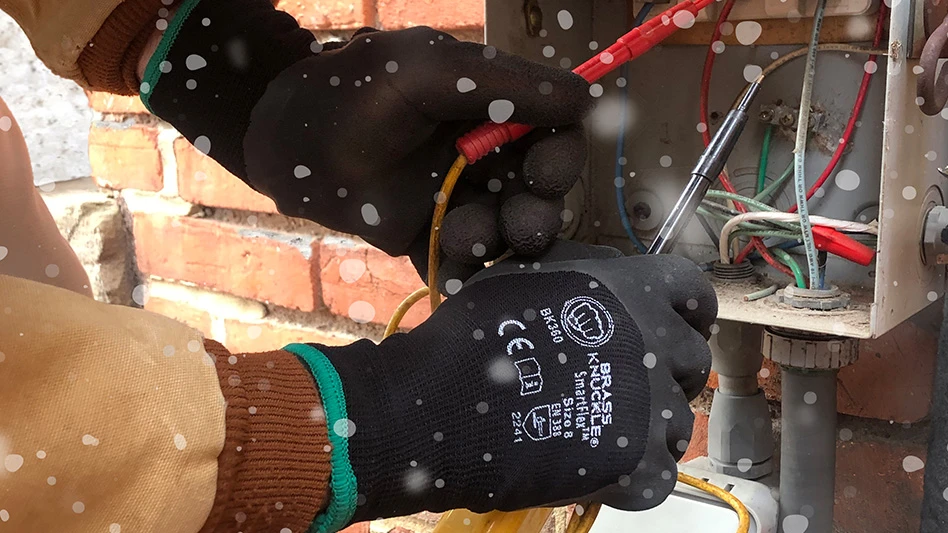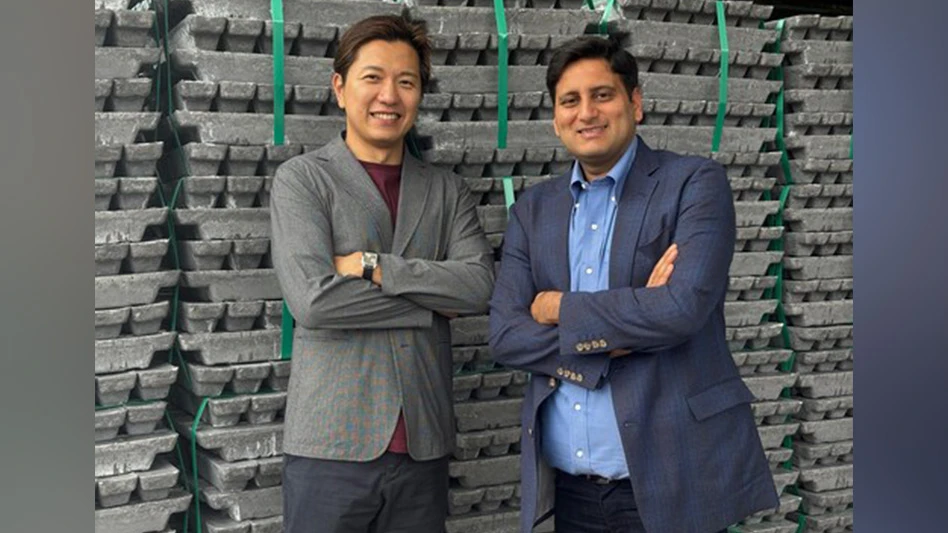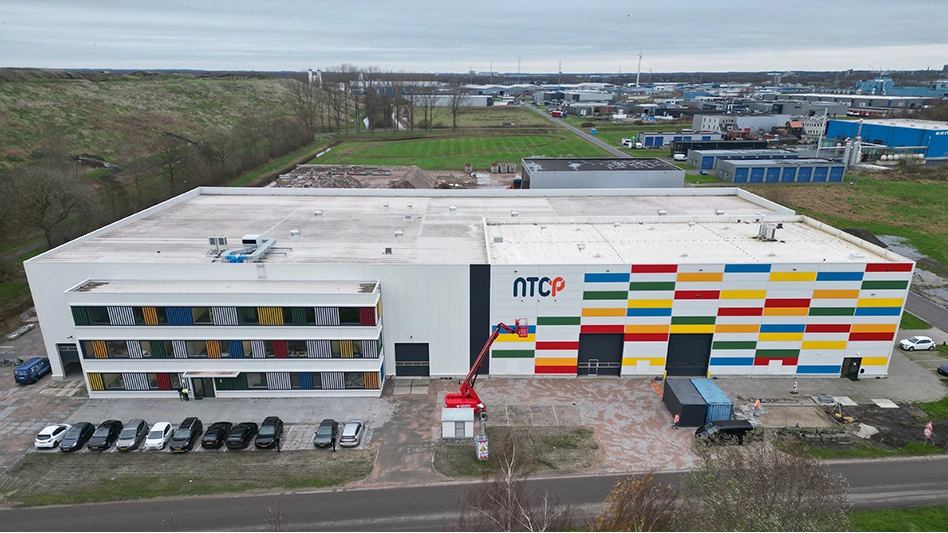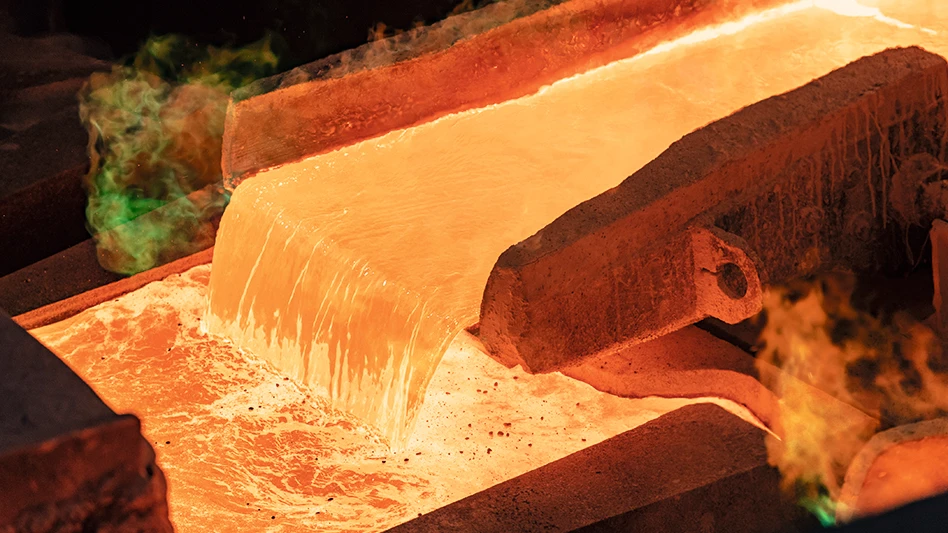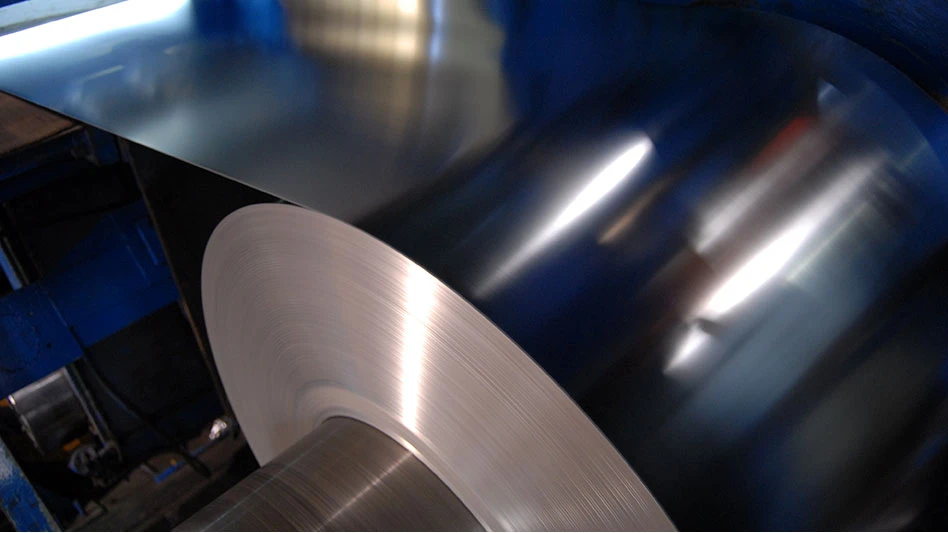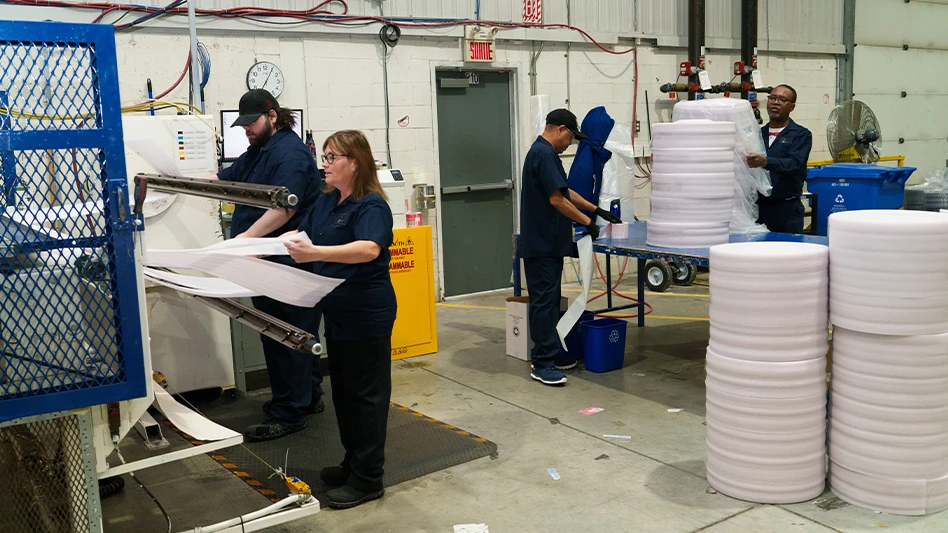These are heady days for the Canadian recycling industry. Despite recent flatness in most scrap prices – a phenomenon not limited to Canada – scrap exports are up, the volume of processed material is up as well, and so is the total dollar value of that material.
In terms of overall trade, 1995 was a record year in Canada, according to Brian Smith, a metals recycling commodities specialist in Canada’s Department of Natural Resources. "A little over 11 million tons of metal were recycled, and we anticipate that this year will be even better," he says. "Will there be a substantial increase in overall trade? It’s too soon to tell."
Len Shaw, for one, believes that the continued expansion of the Canadian recycling industry is inevitable. "Over the next few years, you’re going to see two things," says the director of public and government affairs for the Canadian Association of Recycling Industries. "You’re going to see more materials being recycled, and you’re going to see more recycling operations coming online."
If the recent past is any guide, look for Shaw’s prediction to score a bull’s-eye, because the current growth of recycling in Canada is not new. The trend has been well underway for the last five years, according to federal government statistics.
Since 1991, Canadian trade in recyclable metals has grown more than 69 percent, from 3.1 million metric tons that year to 5.2 million metric tons in 1995. Meanwhile the value of this material has more than doubled during the same time span, from just less than $1.5 billion (Canadian) in 1991 to just more than $3 billion last year.
PUBLIC COMMITMENT
Shaw’s optimism is grounded on more than a mere reading of recent trends, though. He sees a number of related factors working to spur growth in the industry. First and foremost, he senses a growing awareness among Canadian citizens not only of the importance of recycling, but also of the importance and the nature of the recycling industry itself.
The growing commitment of the Canadian public to recycling is perhaps best demonstrated by the popularity of municipal curbside programs, especially the well-known "blue-box" programs that began in Ontario and have spread throughout the country.
"You folks are so far along in the States, you may not realize that this is a relatively new phenomenon in Canada," says Jim Dixon, general manager of Alcan Rolled Products Co.-Recycling, Mississauga, Ontario. "We’re very excited by the growth of municipal recycling in Canada."
In a typical blue-box program, a city or region contracts out both the collection and the processing of household recyclables. In some regions, both functions are handled by a single company; in others, they’re contracted out to different companies; in still others, it’s the municipal government itself that does the collection or processing or both.
According to Dixon, the blue-box programs are already having a positive impact on the Canadian metals industry. "All of the major (soft-drink) brand owners are now using aluminum cans, whereas just a year ago, only half of them were. That’s good for the whole industry, because it enables us to emulate the great things that America has done in promoting municipal curbside recycling. Aluminum is, happily, the major engine driving the blue-box programs."
Meanwhile, steel food containers have become a commodity in their own right, says Joe Hruska, acting president of CSR: Corporations Supporting Recycling, an industry advocacy group based in Ottawa, Ontario. "The steel industry finds (steel cans) to be very consistent scrap. With cans, they know exactly what they’re getting. We’ve got U.S. mills chasing Canadian can scrap."
Along with the growing public awareness of the overall importance of recycling has come an increasing trend toward designing products with recyclability in mind, says Shaw. This trend will likely have the greatest impact on plastics recycling, as newer generations of cars contain plastic parts that have been marked and designed for ease of removal.
SCRAP IS NOT WASTE
Another challenge facing the Canadian recycling industry has to do with how the government views scrap metals. Brian Smith can tell you of a Canadian company that flat out refuses to use recycled material as feedstock in its manufacturing process. It’s not that the company fears that recycled material will be of poor quality, cost more, or be difficult to obtain, Smith says. And it’s not that the company rejects the idea of recycling. It’s just that the company doesn’t want the hassle of having to explaining to clients (or to ISO accreditation officials) why its products contain material that the Canadian government officially regards as hazardous waste.
The fact is, the Canadian government makes no legislative distinction between salable scrap and landfill-bound waste, Smith says. Therefore, flow control and other types of regulations that apply to the latter necessarily apply to the former as well.
"As a result, there’s a stigma attached to scrap materials that tarnishes demand for them," Smith says. But he is optimistic that the definition of scrap can be uncoupled from that of waste, at least for regulatory purposes.
The first step, he says, is making legislators aware that there is a difference between scrap and waste, and that the useful life of a recyclable product does not end when the product enters the recycling stream. "Take the lead-acid battery," he says. "Once one has been removed from a car, Canada effectively treats a lead-acid battery as hazardous waste.
But by this logic, every car coming across the U.S. border into Canada brings hazardous waste into the country. Why does the fact that it’s being recycled make the battery so dangerous all of a sudden?"
Though regulatory problems are by no means unique to the recycling industry in Canada, that country does lag behind the U.S. in terms of finding workable solutions, Shaw says. For instance, the U.S. Environmental Protection Agency recently announced that shredded electronic scrap in the recycling stream would not be subject to Superfund liability. No such exemption occurs in Canada, where used circuit boards must pass a leachate test in order not to be considered hazardous waste. "Well, of course, if there were no metal in them, they wouldn’t be valuable, would they?" he says.
Even so, Shaw is encouraged that people like Brian Smith are working to spread greater understanding of the issue within government agencies. Smith says the issue of regulatory reform is on the agenda of a multi-departmental working group of environmental ministers from both the federal and provincial levels of government.
And he’s encouraged by the occasional small victory, such as the one that recently occurred in British Columbia, Canada’s westernmost province. There, the provincial legislature had proposed a flow control bill that would have effectively required the licensing of all recycling businesses. The licenses, naturally enough, would have been difficult and expensive to obtain.
"We got involved and were able to convince the province that recyclers were not the problem and should not be punished in this way," says Roy Merritt, president of Rypac Aluminum Recycling Ltd., Surrey, British Columbia, and president of CARI.
MERGERS AND ACQUISITIONS
There are already signs that Shaw is not alone in having a rosy view of recycling’s medium-term future in Canada. Others sharing this view include outside investors and recycling firms convinced that this is a good time to expand their operations.
For example, CAI Capital Corp., an investment firm with offices in Montreal and New York, has announced its intention to invest $25 million in Ontario-based Zalev Metals Inc., the second largest processor of scrap metal in Canada. The money will be used to improve the efficiency of existing operations and to acquire additional processing operations.
Also, IPSCO Inc., Regina, Saskatchewan, has agreed in principle to acquire the assets of General Scrap and Car Shredder, Ltd., a company with operations in Winnipeg, Manitoba; Thunder Bay, Ontario; Regina, Saskatchewan, and Calgary, Alberta.
The recent trend toward mergers makes sense in terms of increasing the efficiency of Canadian recycling operations, Merritt says. "It’s no different than any other industry. It happens that way because of economies of scale." This is especially true in the great expanses of the central prairie provinces, where the supply of ferrous scrap is less certain and shipping expenses more significant, he says.
Merritt does not believe that this trend constitutes a significant threat to smaller recycling firms.
MARKET CONDITIONS
What makes all this activity and optimism in the Canadian recycling world especially remarkable is the fact that it’s occurring against a backdrop of soft prices and a world metal market that remains depressed in the wake of the Sumitomo copper-trading fiasco.
As far as prices and profitability go, 1995 was a better year than 1996 has been, according to Arthur Perlman, president of Dominion Metal & Refining Works Ltd. of St. Constant, Quebec. "Copper and aluminum are both on the weak side – especially copper, which is down 30 percent." Even at the lower prices, though, Perlman says business has been "steady" and "satisfactory."
But others see the current conditions as part of the normal business cycle. "We’ve certainly witnessed a slowdown, but this is a cyclical type of business," says Scott Roos, vice president of recycling for Noranda Sales Corp., Toronto. "Our own forecast is for the market to remain somewhat depressed for the foreseeable future. The supply/demand equation is in surplus, and I think we’re in for a few years of quieter times."
Gerry Zorayan, operations manager of Halton Recycling Ltd., Burlington, Ontario, has seen the price of aluminum used beverage containers drop from a high of $1,800 a year ago to the range of $1,200 to $1,500 per metric ton today. "The market is full of it."
Halton is a small recycling operation that has a three-year regional contract to sort and bale UBCs generated by the local blue-box program. With the price low and the supply high, product quality is a great concern. "When you do your sort, it’s got to be good," says Zorayan. "When you sell a shipment, it’s got to be exactly what you say it is."
From a producer’s standpoint, the current aluminum prices are not so bad, according to Alcan’s Dixon. "We hope the price (of aluminum UBCs) continues in the range of the $1,500-dollar mark," he says. However, he’s generally bullish about the medium-term prospects for aluminum, largely because he sees the automotive industry as "the next aluminum can" in terms of its potential to positively affect the market.
On the ferrous side, prices in the late summer and early fall have been "softer than we anticipated," says Warren Waxman, vice president of purchasing for IW&S Ferrous Ltd. of Hamilton, Ontario. "There’s been a general oversupply, tonnages have been less than anticipated, and we’ve seen a real resistance to higher prices." However, the new Dofasco electric-furnace minimill in Hamilton, Ontario, may change the Canadian ferrous picture significantly, he says. "This will mean 100,000 tons a month of extra capacity for the Canadian and U.S. ferrous scrap market. It should have an impact."
Meanwhile, processors of Canadian ferrous scrap continue to be frustrated by a shortage of gondola cars for rail shipments, Waxman said. The gondola shortage "forces you to move scrap by truck, and that’s not always practical," he says.
According to a federal Canadian policy that dates back to the days when the railroad was the only practical way to ship freight across the country’s vast distances, rail companies are required to provide service to all shippers, Merritt says. Even so, getting one’s hands on a gondola is "a constant badgering activity," he says. "You’ve just got to keep bothering them. I don’t think you’re ever going to get 100 percent of the gondolas you need."
The same could be said for the Canadian scrap market – it would be impossible to recycle 100 percent of the scrap generated in that vast country, but even in the face of soft prices, gondola shortages, and regulatory burdens, recyclers are getting more of it every year. The recycling industry in Canada just keeps on growing.
The author is a freelance writer based in Arlington, Va.

Explore the October 1996 Issue
Check out more from this issue and find your next story to read.
Latest from Recycling Today
- Nucor names new president
- DOE rare earths funding is open to recyclers
- Design for Recycling Resolution introduced
- PetStar PET recycling plant expands
- Iron Bull addresses scrap handling needs with custom hoppers
- REgroup, CP Group to build advanced MRF in Nova Scotia
- Oregon county expands options for hard-to-recycling items
- Flexible plastic packaging initiative launches in Canada
